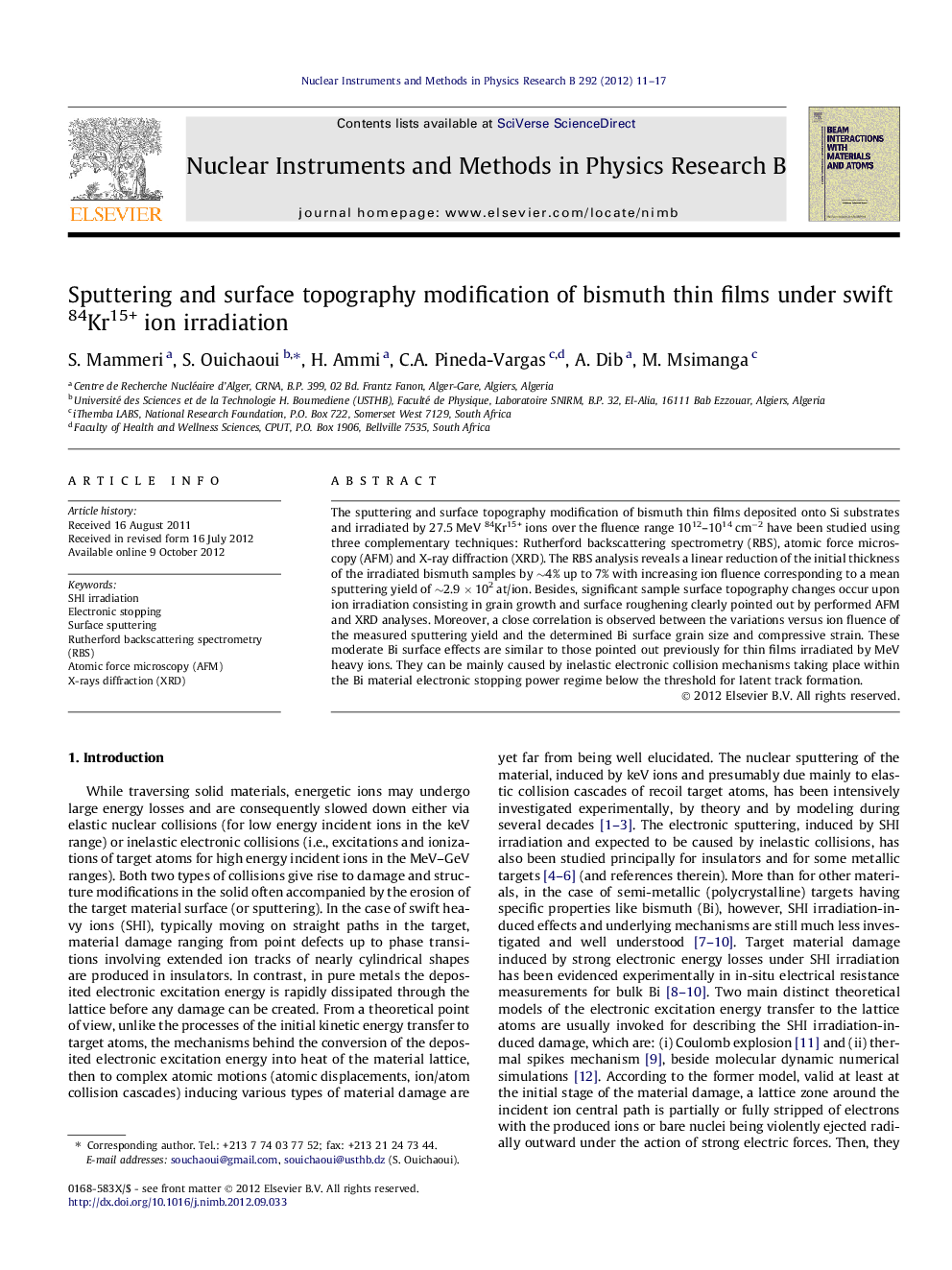| Article ID | Journal | Published Year | Pages | File Type |
|---|---|---|---|---|
| 1680546 | Nuclear Instruments and Methods in Physics Research Section B: Beam Interactions with Materials and Atoms | 2012 | 7 Pages |
The sputtering and surface topography modification of bismuth thin films deposited onto Si substrates and irradiated by 27.5 MeV 84Kr15+ ions over the fluence range 1012–1014 cm−2 have been studied using three complementary techniques: Rutherford backscattering spectrometry (RBS), atomic force microscopy (AFM) and X-ray diffraction (XRD). The RBS analysis reveals a linear reduction of the initial thickness of the irradiated bismuth samples by ∼4% up to 7% with increasing ion fluence corresponding to a mean sputtering yield of ∼2.9 × 102 at/ion. Besides, significant sample surface topography changes occur upon ion irradiation consisting in grain growth and surface roughening clearly pointed out by performed AFM and XRD analyses. Moreover, a close correlation is observed between the variations versus ion fluence of the measured sputtering yield and the determined Bi surface grain size and compressive strain. These moderate Bi surface effects are similar to those pointed out previously for thin films irradiated by MeV heavy ions. They can be mainly caused by inelastic electronic collision mechanisms taking place within the Bi material electronic stopping power regime below the threshold for latent track formation.
